

Sep 05, 2019
The world of marketing is changing. In the past decade, personalization has become a key component of marketing automation techniques. In this age of technology, it should come as no surprise that customers expect personalized experiences with companies they do business with.
According to Statista, 90% of U.S. consumers found personalized content from somewhat to very appealing. However, many misconceptions are surrounding what personalization means and how to implement it correctly.
Marketers need to be more personal than ever before, and they can't do it alone. Luckily, marketers and IT professionals can leverage the capabilities of a CMS like Sitecore to help them get the ball rolling and deliver personalization at scale.
If you're a marketer, you know that your success depends on how well you understand your customers and deliver relevant content to them. With Sitecore personalization you can do exactly that and give your visitors the personalized content they’re looking for. In this article, we’ll discuss the five Ps of Sitecore personalization and show what you can do with Sitecore.
Sitecore Personalization 101
Customers today prefer interacting with brands that they feel understand them and pay attention to their specific wants. Sitecore digital experience platform can help you create a personalization strategy that enables you to contextualize the message you’re sending to your clients, create offers, and personalized digital experiences tailored to each visitor’s unique profile.
One of the most attractive and empowering features of Sitecore Experience Platform is personalization. It represents an opportunity for both business and customer. Digital marketers can show their site visitors relevant content, as well as drive them to conversion points.
Personalization enables you to segment visitors and deliver individual messages to the defined audiences.
A personalized experience in Sitecore XP consists of two pieces:
- A rule used to determine if the visitor matches a segment.
- A content variation for visitors that belong to the specified segment.
To set up personalization in Sitecore, you use the Rule Set Editor. Sitecore Rule Set Editor evaluates the conditions to determine whether the visitor belongs to a segment and changes the content accordingly.
There are four major types of personalization:
- Rule-based personalization: Personalization based on rules like every time customer A does a certain action triggers B event.
- Explicit personalization: Rules are based on known values. For example, location, campaign origin, or previous visits actions.
- Sitecore AI-based personalization: Automated personalization uses machine learning to gain insights from visitors' previous experiences on your website.
- Implicit personalization: Rules are based on assumed values due to the user’s interaction. For example, interest in product type A.
You can implement implicit personalization in Sitecore using different tactics such as engagement value points, content profiling, and pattern cards.
We covered Engagement Value in a previous post. In this post, we’ll focus on explaining the pieces that make up content profiling and pattern cards. They are known as ‘the Sitecore's Ps’:
- Profiles
- Profile keys
- Profile cards & Personas
- Profiling
- Patterns
Let’s take a closer look at these Ps and their impact on Sitecore’s personalization capabilities. But first, some quick tips on getting prepared for Sitecore personalization.
Getting Ready for Personalization
Here are some recommendations to make the most of your personalization efforts.
- Enable Sitecore Experience Database (Sitecore xDB): If you’re also using device detection, you need to subscribe to the Sitecore IP geolocation service.
- Your website’s pages need to be broken up onto display components: This enables you to personalize individual components on the same page.
- A content source needs to exist for every personalized component: This means you might need to create new data templates to host your new content.
- Identify your personalization goals: Ask yourself why you want to personalize content and what value will personalization bring.
- Identify areas for personalization: Establish where your personalized content will go and which parts of your website will stay the same.
Personalizing Website Content Using Sitecore
To make it easier to understand, we'll use a fictitious website as an example: The Adventure Company. The purpose of this site is to sell sports equipment and promote events.
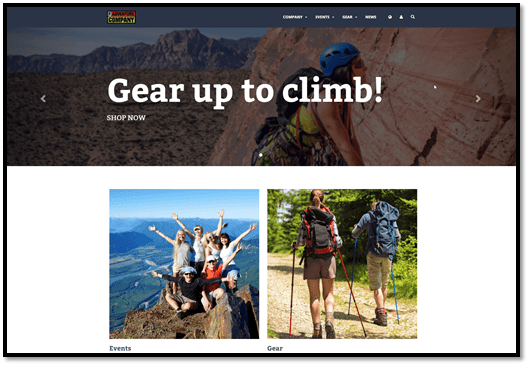
The 5 Ps of Sitecore Personalization In Action
Profiles
Profiles are categories used to define the reason why you are tracking the visitor's behavior. In Sitecore's Marketing Panel content tree a profile is the parent item of profile keys, profile cards, and profile patterns.
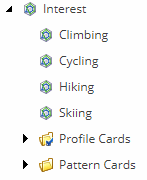
For example, the Adventure Company website owners want to know what their visitors’ interests are, what's their skill level, and what events they are interested in. That will lead to 3 profiles as follows.
|
Profile |
Description |
|---|---|
|
Interest |
Activities by which we identify what sport a visitor is interested in |
|
Skill Level |
Scale used to determine how experienced a visitor is in a determined sport |
|
Event Type |
Types by which we identify what events a visitor is interested in |
Profile Keys
Your scoring system scale. What you want to measure. Attributes shared between profiles and patterns. It is recommended to use a scale that facilitates the math.
For example, the Interest profile of the Adventure Company website has as profile keys Climbing, Cycling, Hiking, and Skiing and use a scale from 0 to 10. This means you will be able to assign a score between 0 and 10 to each key.
|
Profile |
Profile Keys |
Scale |
|---|---|---|
|
Interest |
Climbing |
0 to 10 |
|
Cycling |
||
|
Hiking |
||
|
Skiing |
Profile Cards & Personas
Set of profile keys. The type of content consumed by your visitors.
For example we will use the profile cards: Climber, Cyclist, Hiker, and Skier to tag the Adventure Company website content. Each one of them will score 10 on the matching interest profile key and 0 for the other 3.
Climber: Content whose focus is climbing
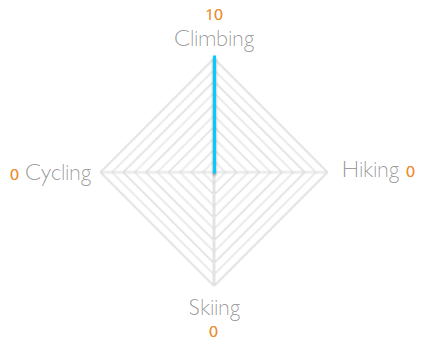
Hiker: Content whose focus is hiking

Skier: Content whose focus is skiing
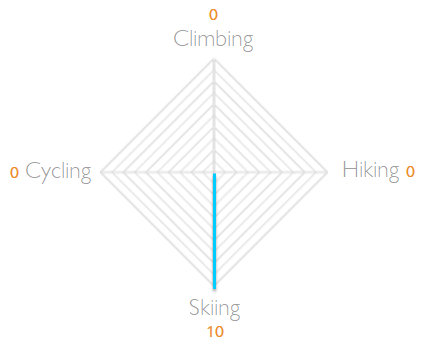
Cyclist: Content whose focus is cycling

Personas are just a different type of template. Sitecore will function the same if you define profile cards or personas, so it is a business decision which template to use. It is recommended to use personas instead of profile cards when you will use them to tag content specifically designed to target a known business persona.
Profiling
Profiling refers to the action of associating the defined profile cards to your web pages. For example, an article that describes climbing techniques is relevant to the Climber profile card, so you must associate the two.
Sitecore allows you to configure your profiles in three different ways: sum, average, and percentage. Besides that, you can use the values assigned to the cards or customize them per page.
For example, in case you defined a 5 for the climber profile card but there is a page that should add 7 points to the visitor score you can change the value on that specific page.
It is recommended to work with your sitemap outside of the CMS. Creating a document where you map all your website pages to their corresponding profile cards will ease off your task and will give a complete picture of the end result.

Patterns
A pattern is a set of profile keys by which you identify a visitor profile as it relates to other visitors. It represents a type of typical website activity, a type of visitor.
Continuing with the Adventure Company website example and the interest profile let's say that these website visitor types are the following:
Lily:
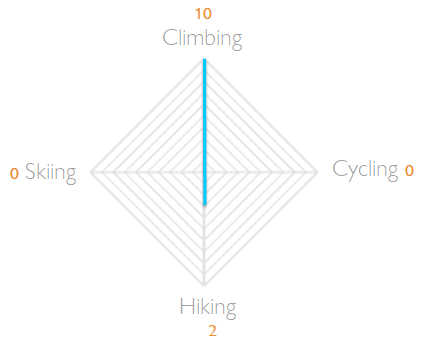
Christina:
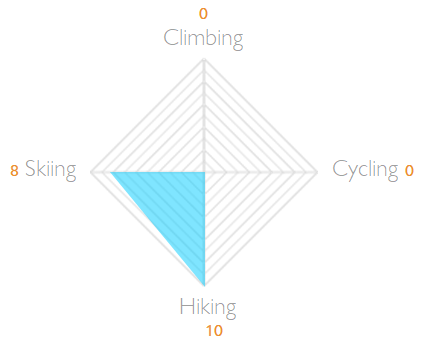
Mario:
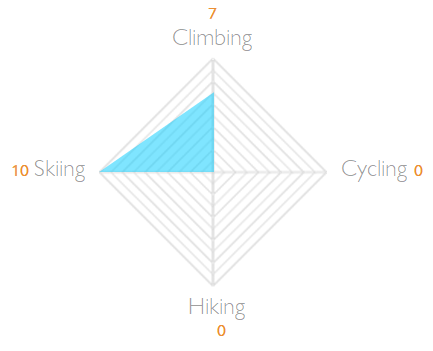
Stefan:
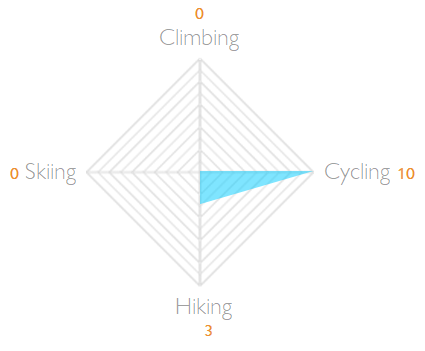
How Sitcore Personalization Works
Sitecore uses all the elements previously explained to automatically map your site visitors to defined profiles.
When a visitor navigates through your website, they accumulate the profile values of all the pages and resources that they request. Sitecore calculates the average score that the visitor has accumulated for each profile and maps the visitor to the pattern card that is the closest match in real-time. A pattern won't be assigned to a visitor until there is a close enough match.
A visitor can only be mapped to one pattern card per profile at a time. However, as a visitor navigates through your website, the pattern card that they are mapped to can change as they interact with different items and resources.
The more pages our users visit the more we'll know about their interests and the better Sitecore will be able to match them to the defined profiles.
Let's go back to the Adventure Company website example. After completing the content profiling of the site we ended up with:
- 6 pages associated to the climber profile card or profile keys
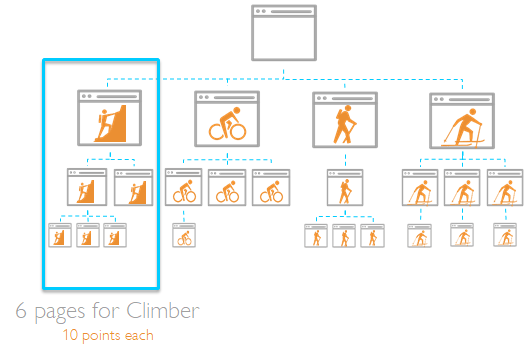
- 5 pages related to the cyclist profile card

- 5 pages tagged with the hiker profile card
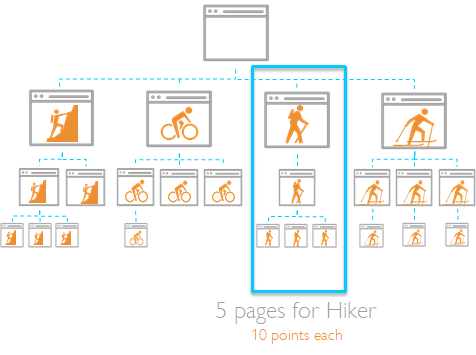
- 7 pages whose content was profiled as a skier
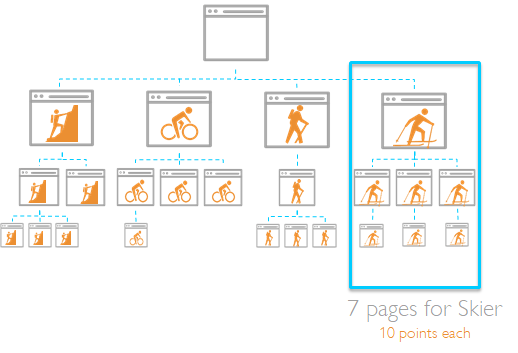
Now let's check some fictitious interactions of an anonymous visitor to the Adventure Company website:
On the first visit this user visits the homepage, from there they navigate to a climbing page, two more climbing pages, and they go back to the homepage. Then they visit a hiking page, and after that they decide that they are done for the day.
As they close their browser ending this visit, Sitecore looks at each page in that session and adds the profile keys. And we know that in this case it is 10 for each interest. So the visitor got 30 points for climbing, 30 is divided by the number of pages visited in this case 4, so after this visit they score 8 for climbing. And Sitecore does that for every profile card. So after this visit they also score 2 for hiking.
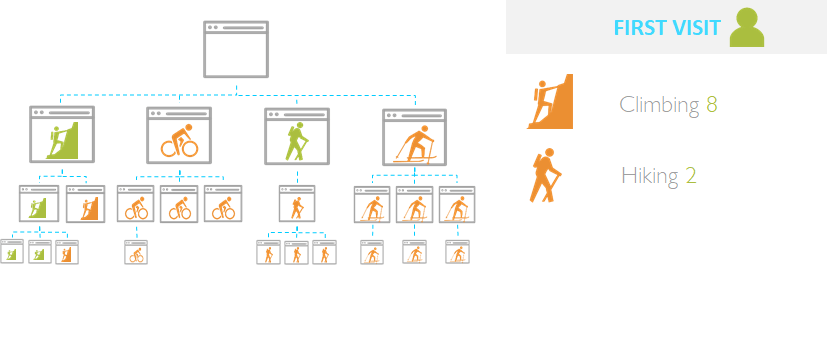
When Sitecore is done determining the user’s profile, it compares it to the pattern cards that we set up. Sitecore determines the shortest distance, or in more human terms, the difference between the visitor's profile and our patterns, and whichever pattern is more alike to the visitor's profile is the one that they are going to get assigned to.
In this case in their first visit, our anonymous user is matched to the Lily profile.

With auto-personalization, you do not have to predefine any user segments to build and launch a personalized experience. Sitecore AI Automated Personalization predicts and recommends the best variant to induce user engagement, based on the end user’s actions and behaviors on your website.
What You Can Do With Sitecore Personalization
You can use profile points and pattern matching as criteria to implement:
- Personalization of content
- Enter the visitor into an engagement plan
- Send a notification to the sales team
For example, based on the accumulated profile points or the pattern we can now personalize the experience for our example visitor. Next time he/she visits the Adventure Company site there could be climbing-specific content on the homepage hero.
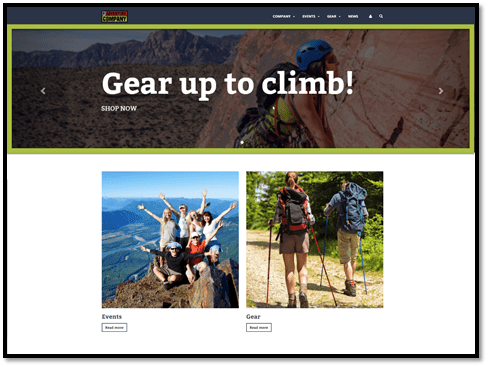
There is value in defining patterns even if you are not doing anything else with them. Let Sitecore gather data from your visitors' interactions, and map them to your defined profiles so that you can analyze them.
It is possible that there are profiles or visitors’ types, that you don't identify on your first attempt. If that’s the case, to spot these patterns, use Sitecore Experience Analytics and SitecoreExperience Manager to look up the following data:
- Percentage of matches for defined patterns
- Visitor interactions not matched to a pattern
Sitecore Artificial Intelligence Personalization: The Next Frontier for Content Personalization
Sitecore’s AI-based personalization enables you to use auto personalization on existing content variants and deliver personalized experiences that are targeted individually to each user.
With the help of Sitecore auto personalization, users can go beyond rule-based and persona-based personalization as the AI-assisted tool enables you to create personalized experiences without having to predefine user segments. Sitecore AI automatically predicts and recommends the best variant to increase user engagement, all based on the end user’s actions and behaviors.
Using machine learning algorithms, Sitecore enables personalization at the component level thanks to an advanced rules engine that’s based both on personalization rules and automated personalization to decide which variant is the best to display to a visitor.
Sitecore AI also enables users to run auto personalization to images, text snippets, and calls to action. Plus, it gives marketers and content editors insights about performance and visibility thanks to the AI analytics embedded into Sitecore XP.
Oshyn: Your Sitecore Personalization Partner
Oshyn is a Sitecore partner that works with brands to create awe-inspiring digital experiences. Oshyn can help you redesign and implement Sitecore digital experience platform.
Our deep understanding of Sitecore goes beyond setting and maintaining a Sitecore implementation. We can help you leverage the full potential of the DXP and deliver personalized experiences at scale both using AI and rule-based personalization.
If you want to learn more about our services and read a first-hand account of our personalization skills, take a look at our case study NEA Member Benefits Sitecore Site Development.








